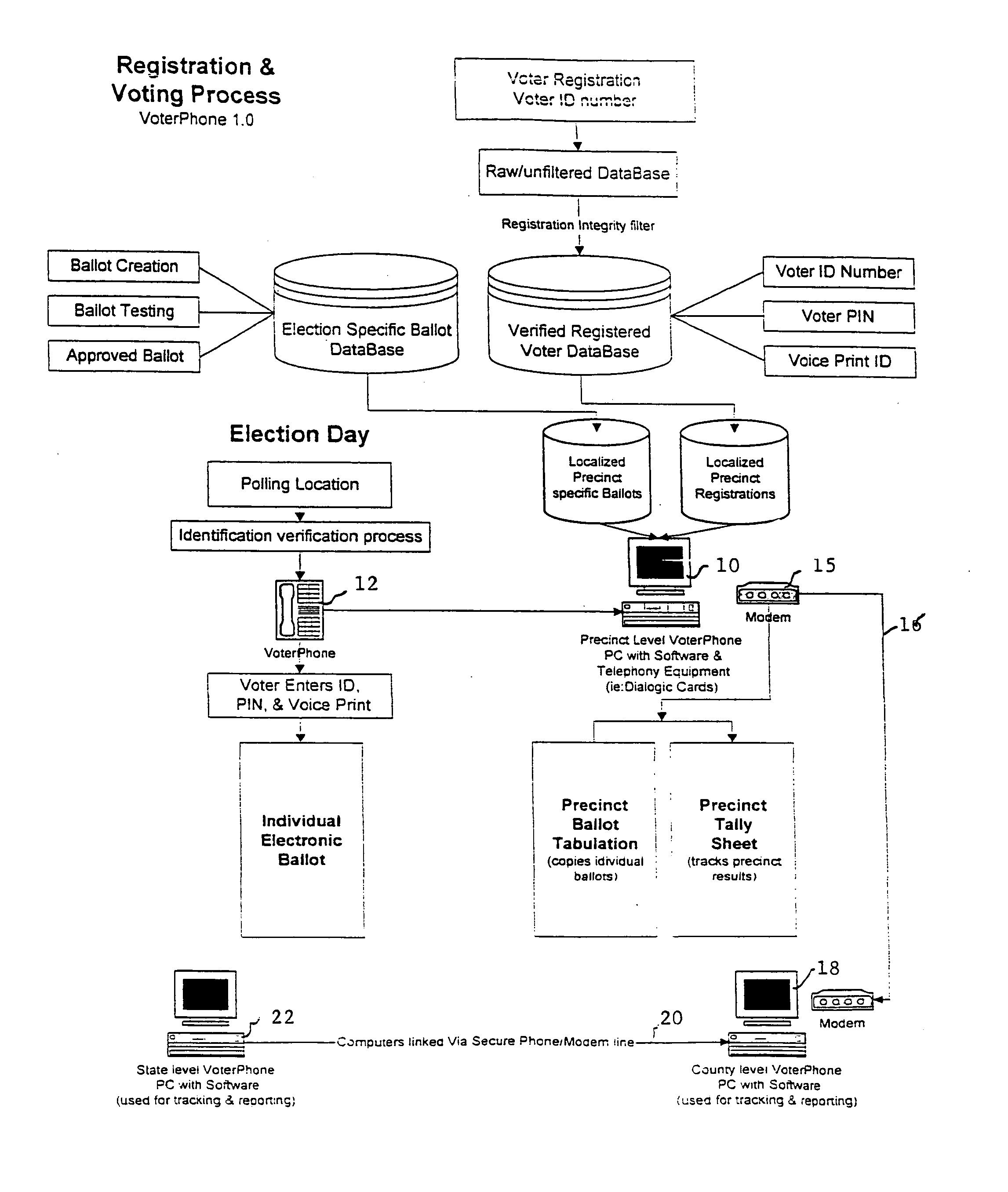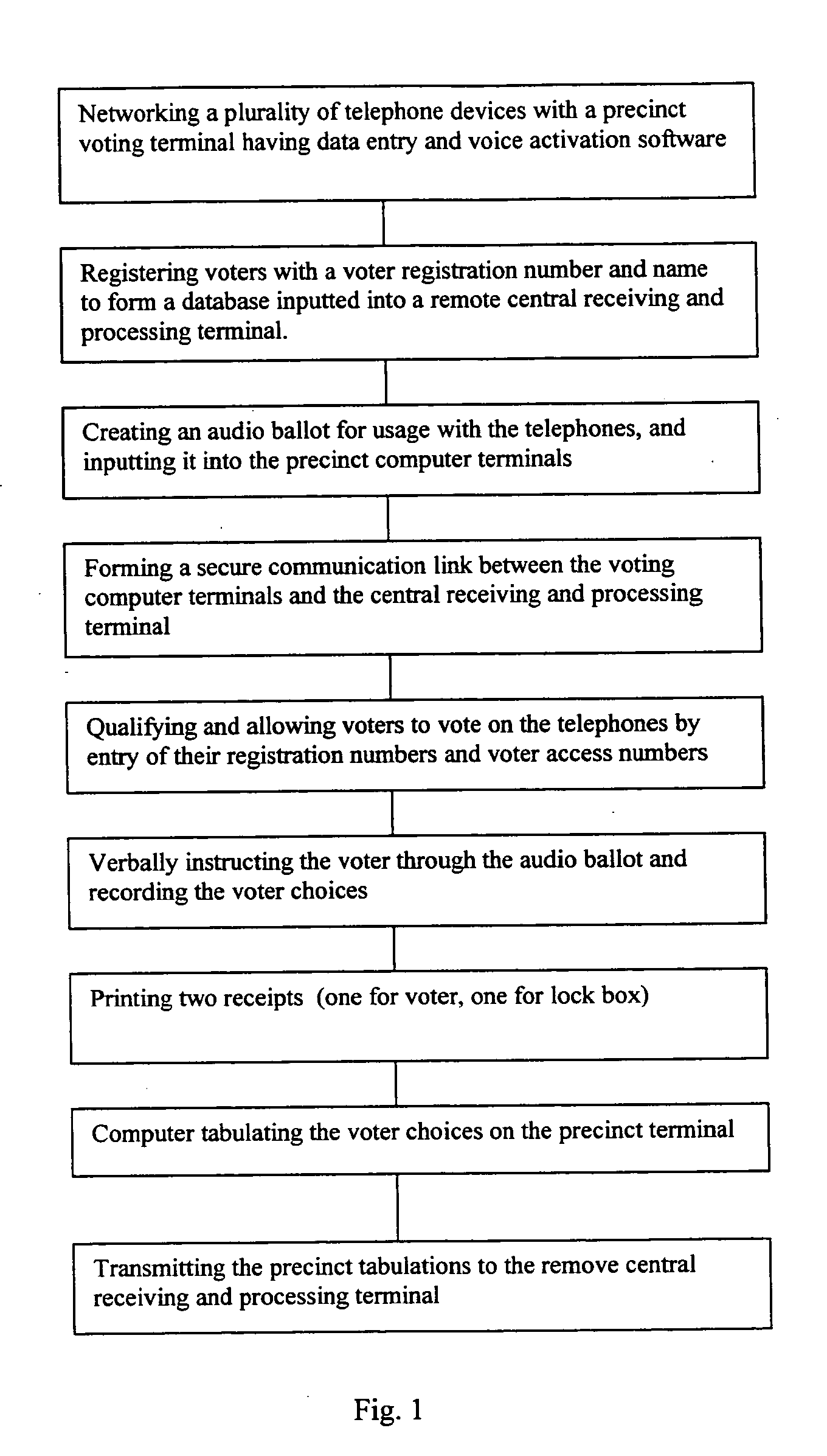Voting method and apparatus
- Summary
- Abstract
- Description
- Claims
- Application Information
AI Technical Summary
Benefits of technology
Problems solved by technology
Method used
Image
Examples
Embodiment Construction
[0063]FIG. 1 is a flow chart of applicant's preferred method of voting. The voting method employs interconnected precinct voting terminals having data entry and voice activation software with a plurality of automated touchtone telephone devices. These touchtone telephones have microphones, receivers, transmitters and receivers, and entry keypads. They are interconnected with the precinct voting terminals via a virtual private network. Voters are then registered in accordance with election laws and assigned a voter registration number. Their names and voter registration numbers are then inputted into a database stored in a remote central receiving and processing terminal.
[0064] Next, an audio ballot is created suitable for transmission over a telephone, and is inputted into a database including audio ballot instructions required in each respective precinct computer terminal. A secure communication link between the precinct voting computer terminal and the central receiving and proce...
PUM
 Login to View More
Login to View More Abstract
Description
Claims
Application Information
 Login to View More
Login to View More - R&D
- Intellectual Property
- Life Sciences
- Materials
- Tech Scout
- Unparalleled Data Quality
- Higher Quality Content
- 60% Fewer Hallucinations
Browse by: Latest US Patents, China's latest patents, Technical Efficacy Thesaurus, Application Domain, Technology Topic, Popular Technical Reports.
© 2025 PatSnap. All rights reserved.Legal|Privacy policy|Modern Slavery Act Transparency Statement|Sitemap|About US| Contact US: help@patsnap.com



